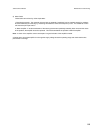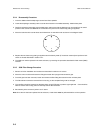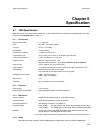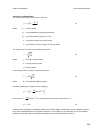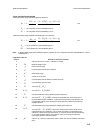Maintenance & Fault Finding 3098 Technical Manual
5-10
5.2.7 Leak Testing the 3098
Leaks incurred during servicing can be categorised under two main headings:
a) Reference Chamber leaks
1. Charge the reference chamber to 6.5 bar G using any clean dry gas.
2. Pass a gas of constant specific gravity (e.g. nitrogen) through the instrument, and when stabilised, record the
time period.
3. Repeat operation 2 every day for three or four days, ensuring that there are no large temperature changes at
each reading.
4. A downward drift in the time period indicates a leak.
Note that further tests can be done in order to define the nature of the leak. These procedures are laid out in section 5.1.2.
b) Gas Path to Atmosphere Leaks
1. Apply any clean dry gas at a pressure of 6.5 bar G to the meter.
2. Apply a soap solution or 'Snoop' to all disturbed areas of the meter and observe for any bubble formation.
3. Seal as required and on completion of a satisfactory leak test, vent the meter to atmosphere.
5.2.8 Post Maintenance Tests
A density measurement check on ambient air will verify that the vibrating cylinder is functioning correctly. A full calibration
followed by a calibration check preferably using two suitable calibration gases, as previously described, will be necessary
to prove the system. This check, when carried out over a period of time acts as a leak detection test.
5.2.9 Worked Example of Calibration Certificate
This example relies on the following criteria being assumed:
Specific gravity span is 0.5 - 0.7
Gas line pressure 15 Bar
Reference chamber pressure 7 Bar G
Calibration gases CH
4
and N
2
SG values 0.5549 and 0.96715
The calibration gases in their pure state are passed through the meter and their respective periodic times measured.
From this information, the coefficients are derived.




